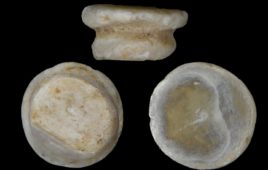
As scientists continue to genetically modify different species, they still cannot defeat nature.
Researchers at the University of Kansas and Cornell University have showed the daunting challenges in changing the DNA of entire populations of species, as efforts to genetically alter natural populations to solve problems that plague human beings have failed.
“A lot of times nature interferes with how humans would like the world to be,” Robert Unckless, the lead author of the study and an assistant professor of molecular biosciences at Kansas, said in a statement. “Good examples of that are pests in crops and insect-vectored diseases, like the Zika virus or dengue or malaria.”
Discussions regarding modifying specific genes at the population level have been mostly theoretical because genetic edits pushed through a population also tended to have a “fitness cost,” which decrease the life span of altered individuals or render them sterile. Therefore, natural selection favors individuals lacking modified genes and purges a given genetic alteration within a population within a few generations.
However, scientists gained a new edge with the creation of techniques using “selfish genes” that take advantage of natural elements to cheat genetic “Mendelian inheritance”—whereby offspring of modified and non-modified organisms are just as likely to inherit traits from either parent and overcome the fitness cost.
“There are several examples of selfish genetic elements that cheat Mendelian laws, so instead of a 50 percent chance of a modified gene transferring to offspring, they have an 80 or 90 percent chance,” Unckless said. “By doing that they spread through a population much more quickly.”
According to Unckless, by tying the mutation for shorter lifespan or resistance to dengue fever in mosquitoes to one of the selfish genetic elements that can drive through populations, scientists found a way to overcome fitness cost.
“It’s compensated for by the Mendelian cheating going on, so you can spread it through a population,” Unckless said. “It’s known as it ‘gene drive’.”
Unckless said the approach “more or less stalled out” until two years ago when researchers in California incorporated CRISPR/Cas9 into their gene drive constructs, which brought back to life dreams of creating super mosquitoes to eradicate diseases.
The CRISPR/Cas9 approach identifies a targeted genetic sequence and creates a mutation by inserting itself as the genetic mechanism of that sequence of DNA.
“So science has now created a mechanism to recognize a sequence, cut it and insert the genetic material that we want,” Unckless said. “That might include the CRISPR/Cas9 machinery, but also a new gene that provides resistance to dengue fever in the mosquito, for example, so the two spread together.
“In only a handful of generations you go from having almost no copies of the mutation in the population to it being ‘fixed’ so every individual in the population has it — at least that was the simple theory.”
However, despite the new methods, nature still comes out on top.
“We expect that resistance alleles will pop up either before the drive can spread, or after the drive spreads, and eventually replace the drive,” Unckless said. “If your goal is to get resistance to dengue into the population, you might do that — and it might persist for a few generation or a few hundred generations — but then it decays and leaves behind resistance alleles.”
In the new study, the research team used mathematical modeling to calculate the likelihood of this resistance evolving, which showed that nature still has the edge over scientists.
“We argue resistance could be thought of as a good thing — if we know it’s going to evolve, we can plan around it, and understand a gene drive is a temporary solution,” Unckless said. “Say we know the half-life of this genetic solution is x number of generations, we can monitor it and as resistance starts to evolve we can create a new one.”
The researchers concluded that gene drive is likely to lead to resistance alleles but scientists can prepare appropriately for a dynamic gene drive system with new constructs responding to the appearance of resistance alleles.
The study was published in Genetics




